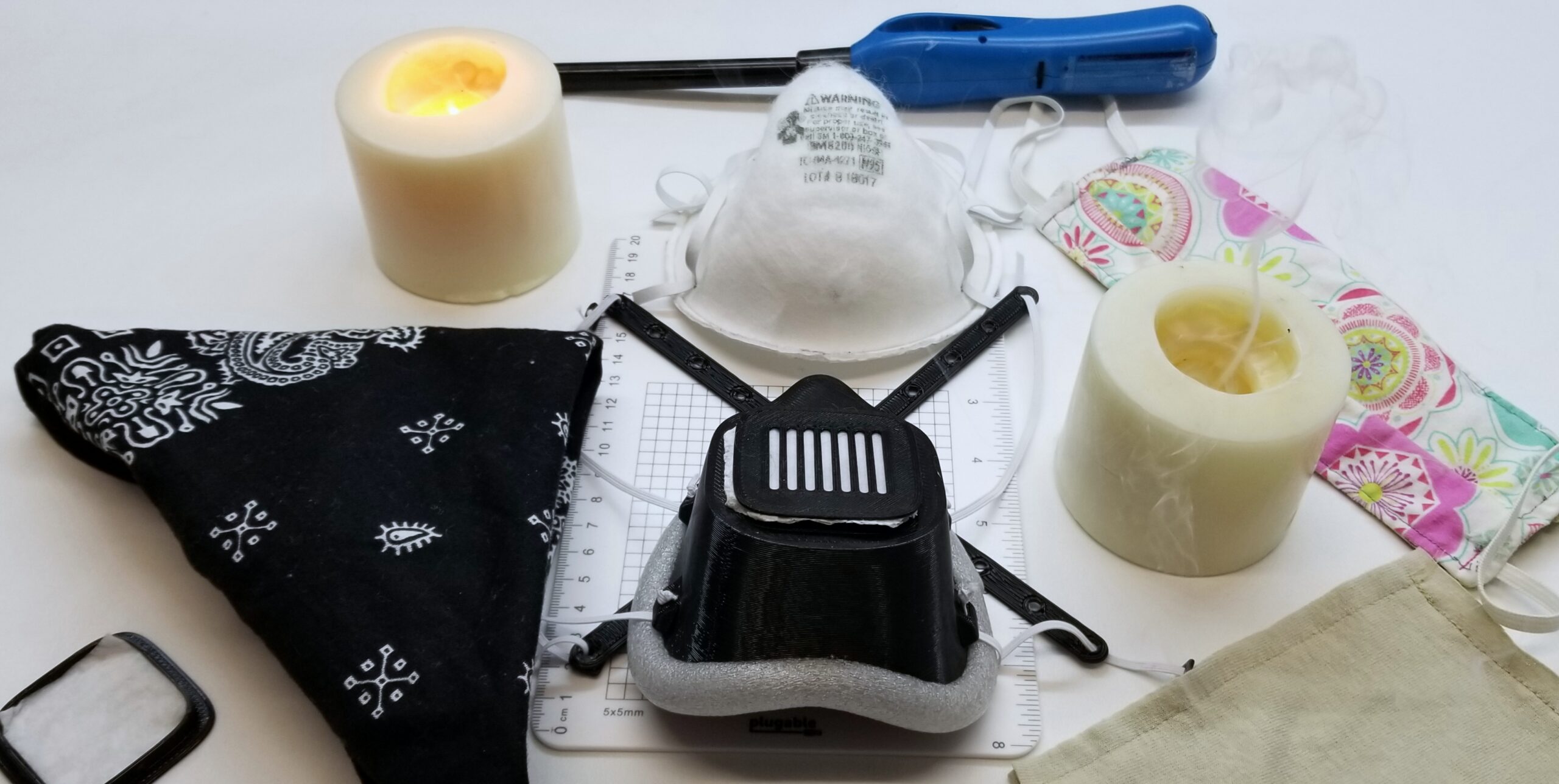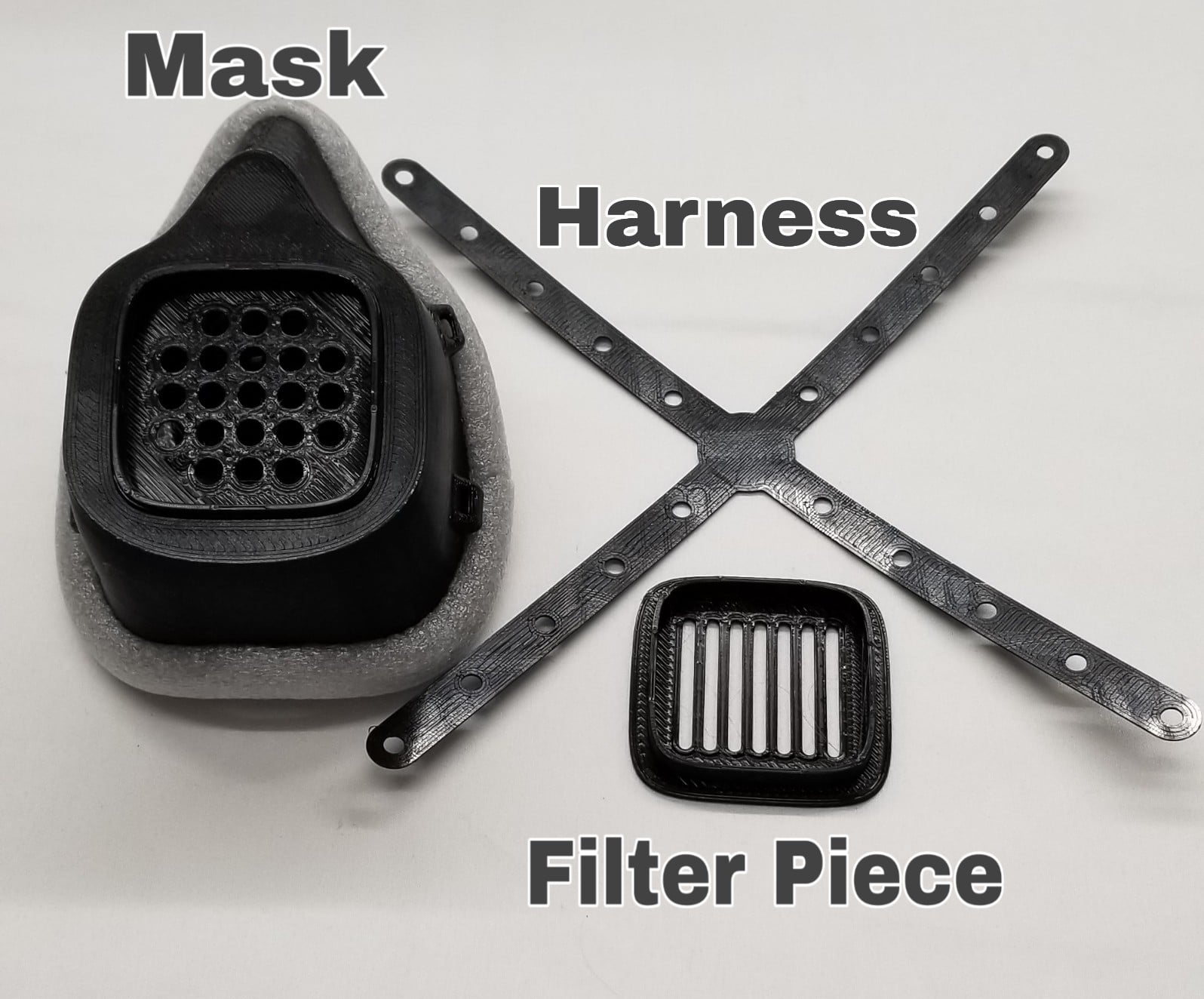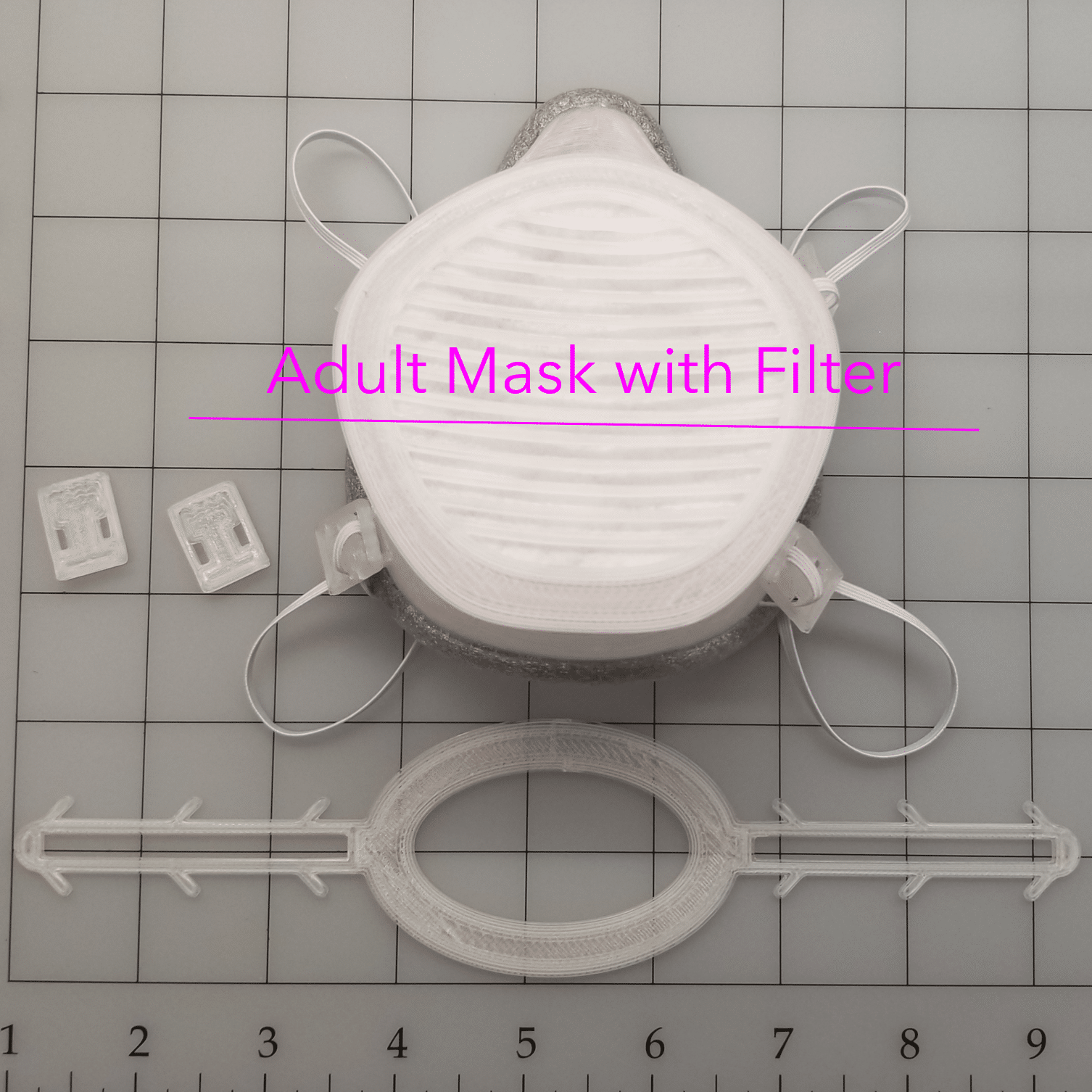
There is scattered (pun intended) information out there regarding mask/filter effectiveness, and being the ‘STEAM’team, we had to test things out for ourselves and make sense of all the noise. So we constructed an experiment, hooked up some sensors, wired some electronics, and put the filters to the test. If you need a mask, you can order the STEAMwhiz mask which we found to perform just as good as N95 masks in our tests. Read here to learn why STEAMwhiz is printing masks.
Intro
We are busy cooking up a nice research article “COVID-19: What you Need to Know”, so we won’t go into details here such as how big is the virus, do I need a mask, or how is the virus spread, etc. Instead we will focus on comparing the performance of different masks to N95 masks.
The N95 Mask Standard
N95 masks are typically made up of 3 separate layers and the main filter medium consists of non-woven polypropylene. The ‘N’ in N95 stands for ‘Not Oil Resistant’. There are two other classifications ‘R – Resistant to oil’, ‘P – Oil Proof’ but for protection against COVID-19, N-type masks are what we are after. The ’95’ declares a 95% filtration efficacy of 0.3 micron (um) particles. If you are interested you can read more about the mask and standards over on the CDC’s website. We will detail ‘how good’ a mask needs to be for COVID-19 in the aforementioned research article. For this article, our goal will be to compare mask filter medium to N95 masks, as it is the standard used every day in the medical field for folks who are constantly exposed to various contagions.
Setup
We researched various setups and decided to go with a ‘candle test’ and laser-scattering particle detector to see which filter was up to snuff. When a candle is extinguished it generates a spectrum of fine particles and is routinely used in research for filtration tests. We funneled these particles up to the filter medium without any additional acceleration from fans etc. The particle detector has a resolution of 0.3 microns (particle size used to rate N95 masks) and was placed in a custom-airtight housing after the filter medium. For the filter mediums, we decided to test the following: an N95 mask (which is made up of three layers), the polypropylene filter medium used in the STEAMwhiz masks, and three fabric-type mask – a two t-shirt layered mask, a quilted-muslin-quilted fabric mask, and a folded bandanna (making two layers total). We also exposed the sensor directly to the particles as a control. The room humidity was 42% and the ambient temperature was 20 C for all the following tests.
Results and Discussion

From Figure 1 we can gain some insight to the performance of each mask type. Some of the important takeaway are:
- The bandanna mask (orange) appears to offer no detectable filtration for particles below 1.0 um and modest filtration for particles above 2.5 um.
- The t-shirt mask (green) is slightly better than the bandanna where we can detect some effectiveness for particles above 1-micron
- The quilt mask (turquoise) is the best performing fabric mask and is the only fabric mask to offer some form of sub-1-micron particle filtration
- The N95 and STEAMwhiz masks appear equivalent and successfully filter out all particles above 2.5-microns

Figure 2 clearly shows how much better the polypropylene-based masks perform across the board. The N95 and STEAMwhiz filters allowed approximately 50 particles ranging from 0.3-0.5um per 0.1L of air, whereas the fabric masks allowed 100 – 1000 times more particles through their respective layers. Interestingly, the multi-layered quilted mask becomes quite effective for particles larger than 10um. The bandanna was left off due to its overall ineffectiveness, but the t-shirt mask was 10 times worse than the quilted mask and approximately 1000 times worse than the N95 and STEAMwhiz masks.

Figure 3 shows close up images of the (a) bandanna and (b) t-shirt. You can clearly see the woven pattern and regular holes/pores typical of fabric materials. The pore sizes for the bandanna where slightly larger than the t-shirt at 135.8 um and 105.2 um, respectively. We also noticed that the t-shirt had more fibers that seems to cross the pores which effectively would reduce the size of the pores.

We wanted to look more closely at the filter mediums that performed the best to better understand the differences. The N95 mask shown in Figure 4 (a) shows a dense pattern of non-woven fibers. The STEAMwhiz mask shown in Figure 4 (b) also shows a dense pattern of slightly larger non-woven fibers. The two filter mediums also varied in total thicknesses/number of layers. The N95 mask had 3 primary layers that measure approximately 0.5 mm, while the STEAMwhiz had about 5 layers and was 1.5 mm in total thickness. So why do the masks perform so well? There are no pores! The fibers cross each other at various angles which fill in any large pores and is unlike what we see above for the woven fabrics.
Conclusion
If you have access to some N95 masks, you should use them as they are quite effective at removing ultra-fine particles (duh). If you don’t have one, no worries, you can order the STEAMwhiz masks we’ve tested. Not only does it perform just as well as the N95 masks in our test above, but you will also help curtail the critical shortage of N95 masks for our amazing health care workers who knowingly exposing themselves to a deadly virus. It is also much more comfortable and easier to use which you can read more about here.
-
VR Nights | Drop-In
$25.00 Select options This product has multiple variants. The options may be chosen on the product page
For the masks to be effective fit is critical; if it doesn’t fit it won’t work well and you can forget about how well the filter medium works. Health care works are typically fitted for N95 masks to maximize their effectiveness. The STEAMwhiz masks come in various sizes and the tension is easily adjustable to help ensure a snug fit.
If you need to wait for a mask and are still going out and about, using fabrics that you have around the house is a great idea! We suggest using the multi-layered mask above, but even a bandanna around your nose and mouth offers some level of protection starting at the 2.5-micron range. While this won’t filter out the coronavirus itself (~0.125 microns), the particles that are spread from a sneeze or cough are typically attached to large particles tens of microns in size. So even a bandanna will offer some level of protection for you and those around you (in case you are unknowingly infected). You can read more about our coronavirus research here ‘COVID-19 What you Need to Know” (coming soon).
We hope this was informative and helpful. While we have spent quite of bit of time getting these things together, it feels good to know we are doing something to help keep people safe and get our country back working again! Feel free to leave us a comment below or contact us with any questions.
If you like our educational content consider supporting STEAMwhiz by checking out our store or donating to the cause =D








